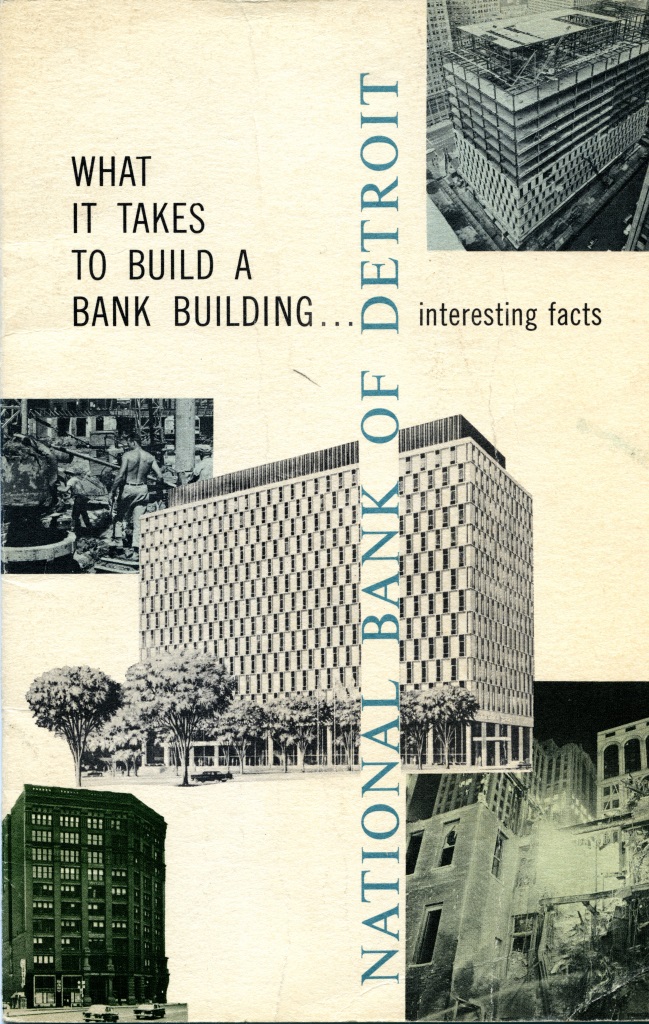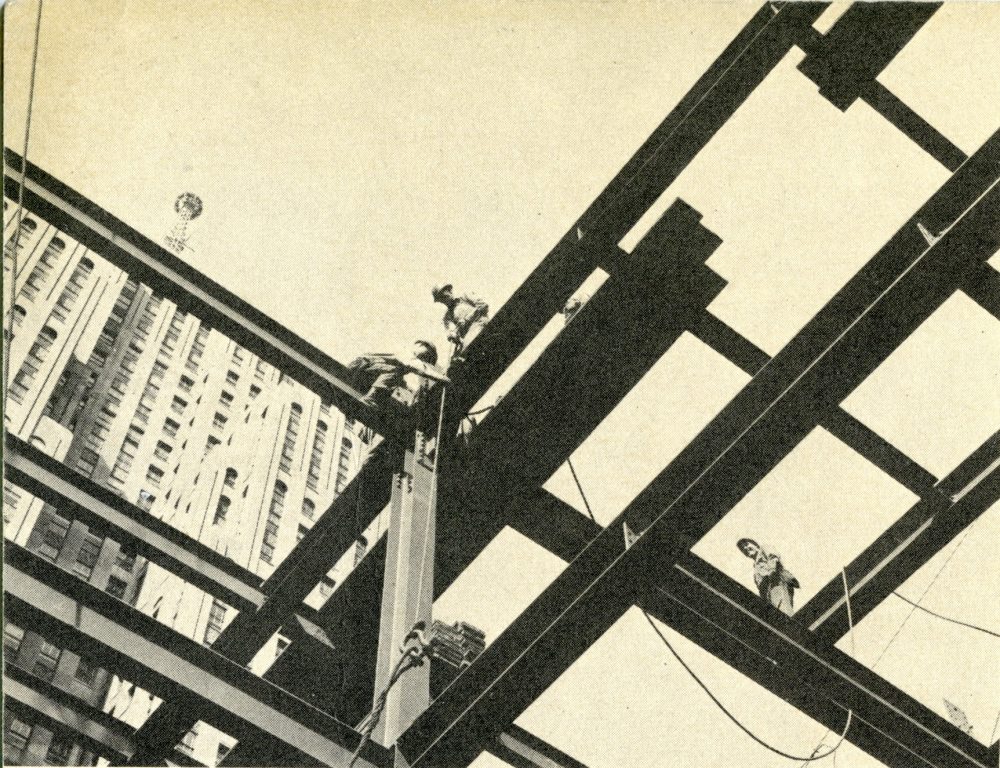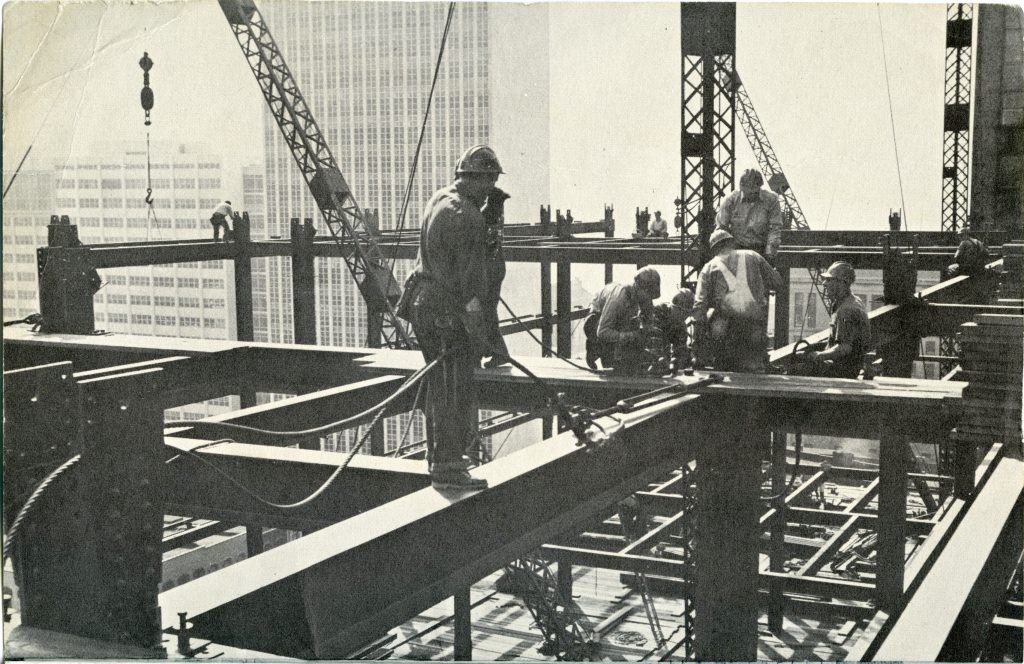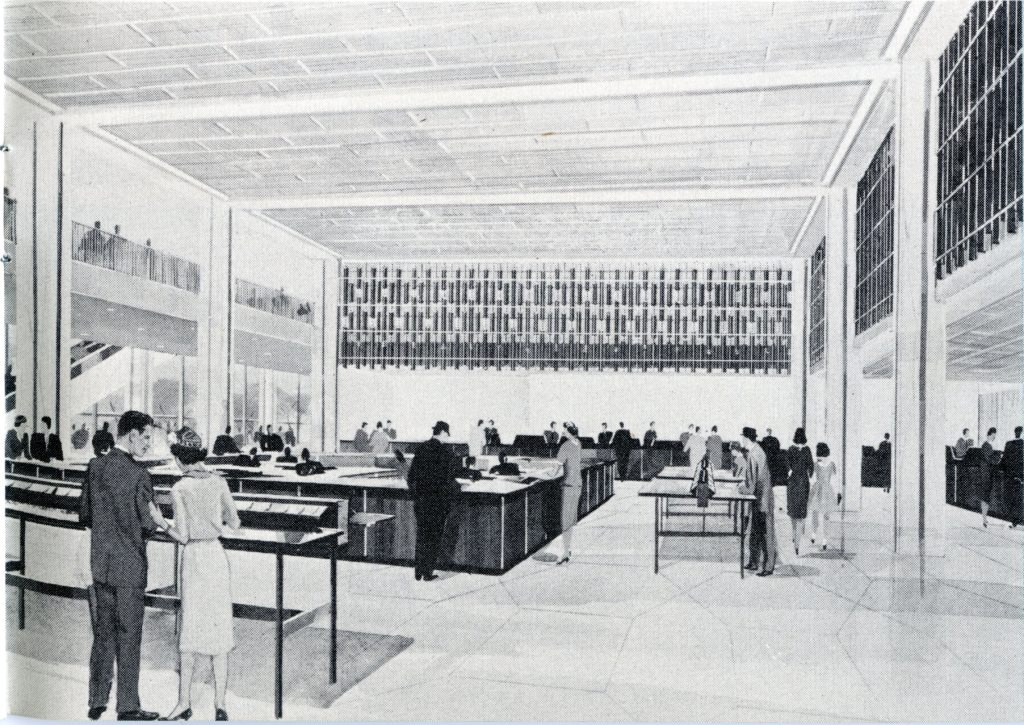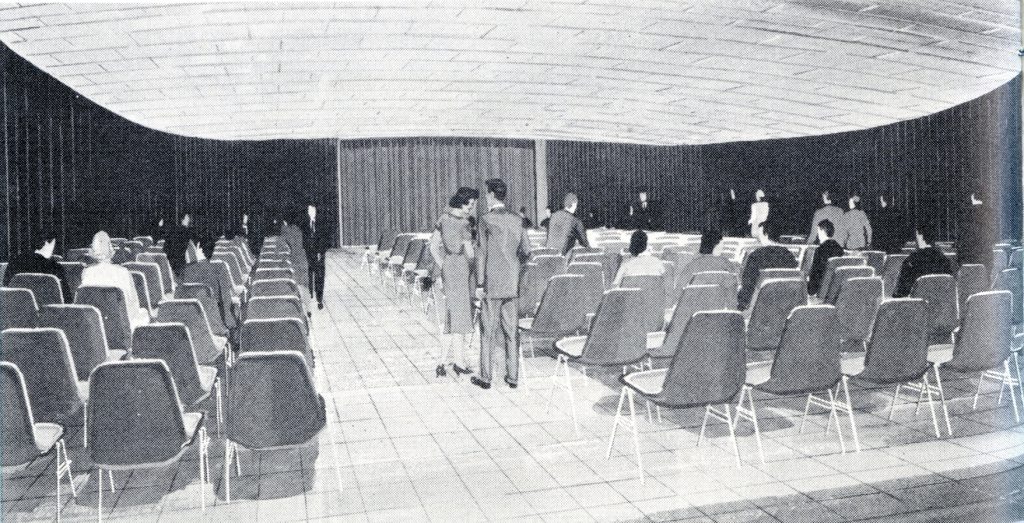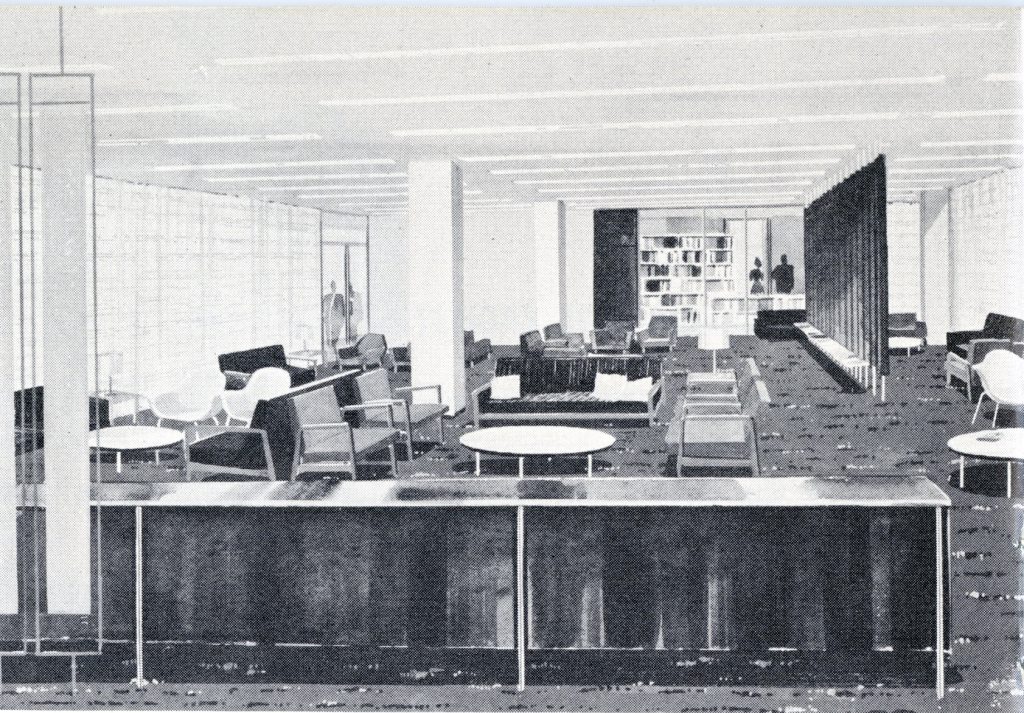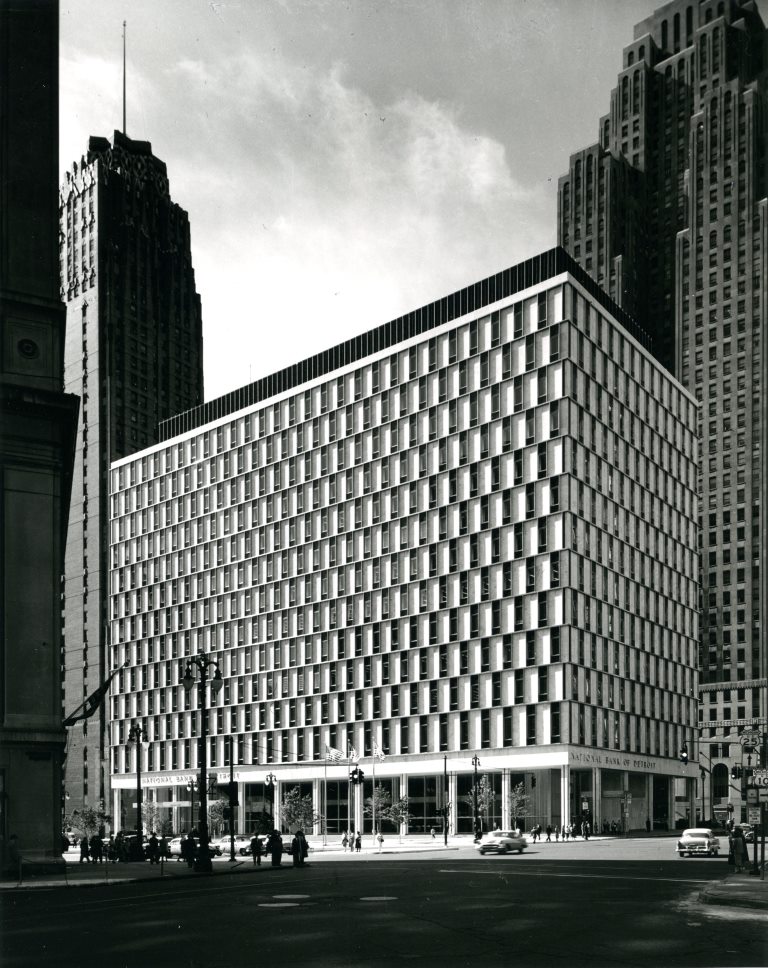What It Takes to Build a Bank Building
It’s 1959. You have $20 million. You want to build a bank building but you’re just not quite sure if you have what it takes. Have we found a book for you! Or, more accurately, this book is an account of the design and construction of the National Bank of Detroit’s now iconic mid-century modern addition to the Campus Martius skyline, currently known as “The Qube”.
The fourteen story brainchild of NBD president Charles T. Fisher, Jr. was designed by Albert Kahn Associated Architects and Engineers, with interior design by W. B. Ford Design Associates. It rose as a shining example of modern innovation and building technology. Special features included filtered air conditioning, a bulletproof Police Guard Room with closed circuit television receivers, a pneumatic tube system with 29 sending and receiving stations, an underground snow melting system surrounding the building comprised of 4.5 miles of pipe carrying hot water and anti-freeze, and a connection to a nationwide private telegraphic system for banks.
The building may not have been very tall compared to its neighbors, but its plans still specified for an incredible amount of material: 14 elevators, 1 escalator, 13,099 square yards of carpeting, 113 interior plantings, 932 windows, 1,300 telephones with 600 miles of wire, enough steel to build 30 miles of railroad track, enough concrete to lay 54 miles of 5 foot wide and 4 inch thick sidewalk, and 324 miles of insulated copper wire with electrical capacity to supply a city of 8,000 homes.
However, the modern design was not without classic touches. The interior was elegantly appointed with teak, bronze, stainless steel, and four types of marble. On the Main Banking Floor, “the color tone is golden brown set against a field of white and accented by black.” This space, almost an acre large, had a 26 foot gilded gold ceiling with recessed fluorescent lighting, and a decorative screen of teak and stainless steel along the Mezzanine. On the 5th floor could be found the board of directors’ room and dining room, both opulently decorated with walnut walls, walnut and rosewood upholstered furniture, and golden silk drapes.
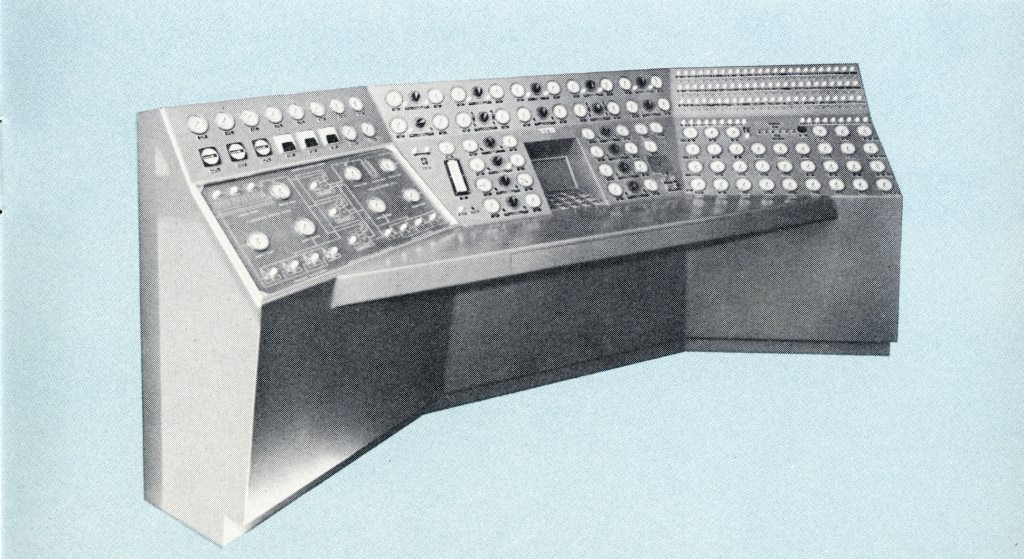 This mechanical services control console on the 4th floor was the 1st of its size and type. It controlled and monitored 55 systems throughout the building.
This mechanical services control console on the 4th floor was the 1st of its size and type. It controlled and monitored 55 systems throughout the building.
Two stories below street level was the Safe Deposit Floor built by the Safe Deposit Company of Detroit. Here were 15 private customer booths, 7 conference rooms, and 6 vaults with a total of 14 doors, each weighing 12 tons. The Trust Vault was the size of two basketball courts and was made of torch and drill-resistant steel. After reading this book you will know all you need to know about building your own bank building.

